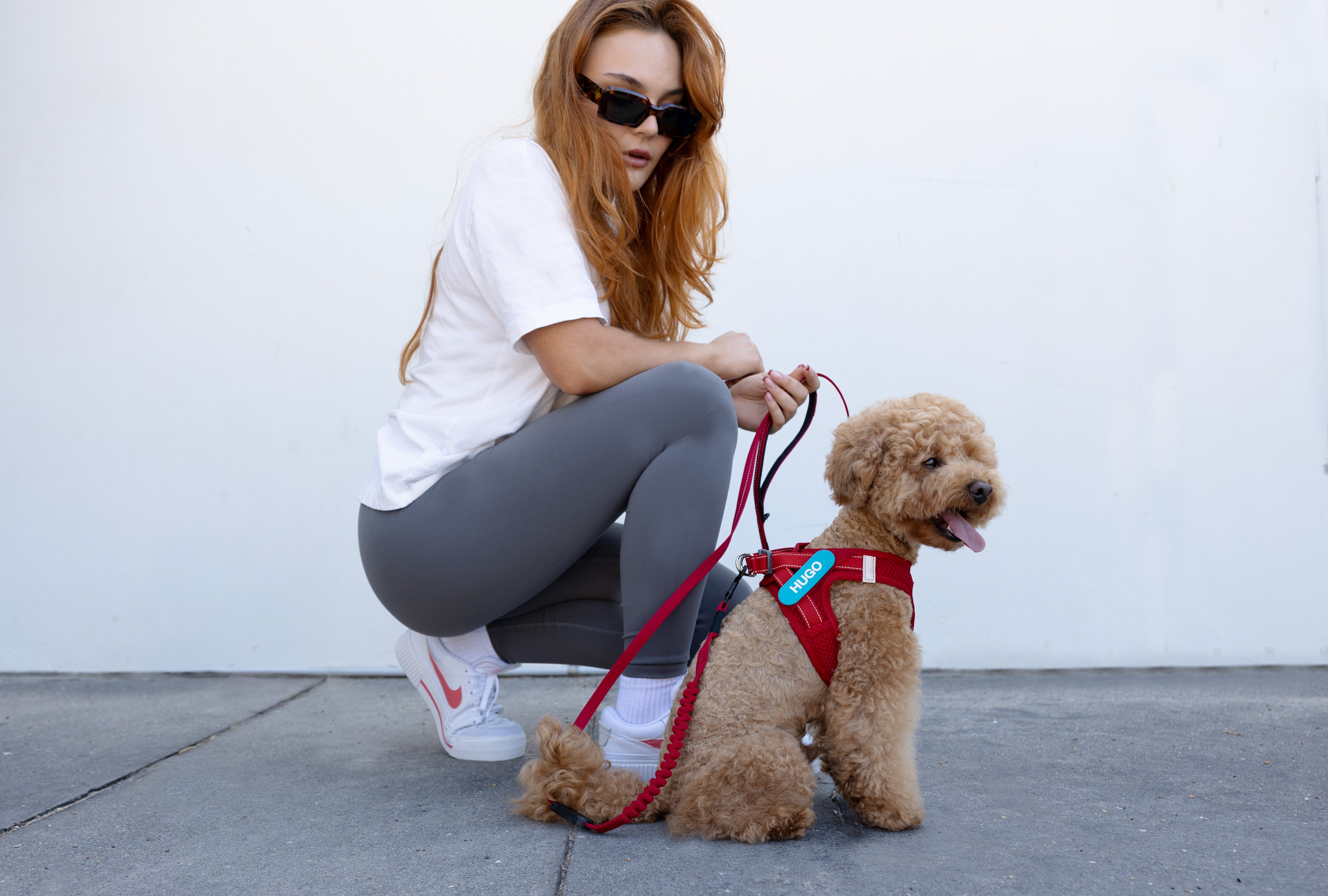
How to Fit a Dog Harness Properly: Step-by-Step Guide
Making sure your dog’s harness fits correctly is one of the most important things you can do to keep them safe and comfortable on walks. A well-fitted harness improves control, prevents injuries, and ensures your dog enjoys their daily outings without discomfort or stress.
Here’s what I’ve learned over the years:
-
A poorly fitted harness can cause rubbing, escape risks, or long-term joint strain
-
Every harness and dog is a little different—there’s no one-size-fits-all fit
-
The right adjustments make all the difference for control and comfort
In this guide, I’ll walk you through the key steps to fitting your dog’s harness the right way.

Why Getting the Fit Right Matters
When a harness fits properly, your dog stays secure and comfortable, and you stay in control.
A poor fit might lead to:
-
Chafing behind the legs or under the chest
-
Slipping out during walks
-
Uneven pressure on the chest or shoulders
-
Difficulty training or correcting pulling behaviour
Getting it right helps protect your dog’s joints and keeps your lead connection steady and safe.
Step 1: Choose the Right Style and Size
Not all harnesses are built the same, and not all dogs are shaped the same either. Some harnesses are step-in, some go over the head, and others are designed for no-pull training. Check the product's sizing chart carefully—don’t rely on guesswork or weight alone.
I use the EzyDog Chest Plate Harness for my medium-sized dog—it comes with a chest support and clear adjustment points. Measure your dog’s girth (around the widest part of the chest) and neck, then choose the closest size without going under.

Step 2: Loosen All Straps Before Putting It On
Before you fit the harness, loosen all adjustable straps. This makes it easier to slip the harness on and prevents any initial resistance or discomfort for your dog.
Depending on the style:
-
For step-in harnesses: lay it flat, place paws through openings, and lift up to clip.
-
For over-the-head styles: slide over the head, bring the straps under the chest, and fasten.
Avoid tightening anything yet—you’ll fine-tune once it’s in place.
Step 3: Position the Harness Correctly
Make sure the harness sits:
-
Front pad at the centre of the chest (not too low or up on the neck)
-
Side straps behind the front legs, not rubbing the armpits
-
Back ring (if using) on top, between the shoulder blades
A correctly placed harness spreads pressure across the chest, not the neck or ribs.
Step 4: Adjust Each Strap for a Snug Fit
Here’s the general rule: you should be able to fit two fingers under each strap. Any looser, and it risks slipping. Any tighter, and it may rub or restrict movement.
Focus on:
-
Neck strap: Shouldn’t pull tight or choke
-
Chest strap: Snug under and behind front legs
-
Girth strap: Must stay in place without sagging
With the EzyDog Express Harness, adjustment is simple—it has one buckle and four points of adjustment for a tailored fit.

Step 5: Do a Movement Check
Have your dog walk around, sit, lie down, and move naturally. Watch for:
-
Shifting or rotating of the harness
-
Gaps forming in the straps
-
Signs of rubbing, biting, or scratching
If it moves too much or you see signs of discomfort, readjust the straps accordingly.
Step 6: Check and Re-check Regularly
Dogs gain or lose weight, and harnesses stretch slightly over time. Make it a habit to check the fit every few weeks or anytime your dog seems uncomfortable.
If your dog wears a harness daily, inspect for signs of wear, especially on the buckles and strap ends.
Tips for Fitting Puppies or Growing Dogs
-
Choose a harness like the EzyDog Convert Harness that’s built to grow with them.
-
Leave a little adjustment room, but not so loose that it becomes unsafe.
-
Recheck the fit weekly—puppies grow fast!

Final Thought
Taking the time to fit your dog’s harness properly helps prevent a world of problems. Your walks will feel smoother, your dog will feel more comfortable, and you’ll feel confident knowing everything’s secure.
Need help choosing the right harness style for your dog? Check out our full EzyDog Harness Collection to find your perfect fit.
Quick Tip: If you’re unsure how to put it on correctly, read our step-by-step blog on How to Put On a Dog Harness or extra guidance.


Leave a comment
This site is protected by hCaptcha and the hCaptcha Privacy Policy and Terms of Service apply.